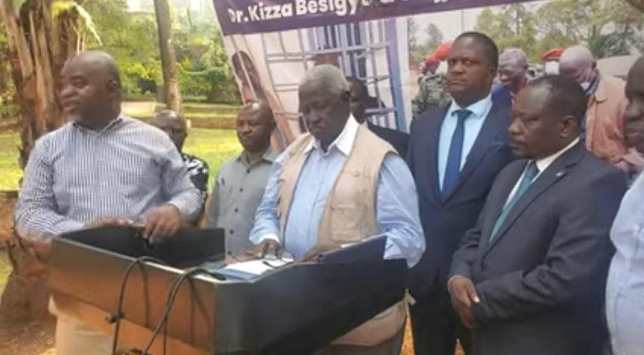This article aims to delve into the reasons behind the disparity observed between the large crowds in support of the National Unity Platform (NUP) and the electoral results in the Hoima.
While NUP’s popularity was visibly evident during campaign rallies, the outcome of the election did not align with these apparent levels of support.
This article seeks to shed light on possible factors contributing to this discrepancy.
Factors influencing the discrepancy:
Several factors can help explain why the strong show of support for the NUP did not translate into electoral success in Hoima:
Voter Turnout:
A significant factor contributing to the disconnect may be the actual number of voters who turned up on Election Day.
Despite the large crowds seen during campaign rallies, it is possible that not all NUP supporters made it to the polling stations, resulting in an under-representation of their actual support base.
Voter Distribution:
It is crucial to consider the geographical distribution of voters within the region. The NUP might have garnered substantial support in certain areas, attracting large crowds during campaign events.
However, these areas might not boast a proportional share of the electorate. Therefore, while NUP might have had passionate pockets of support, it may not have been evenly spread across the entire constituency.
Encountering Strong Incumbency:
Another factor to consider is the presence of strong incumbent candidates from other political parties.
Incumbents often have established support networks, infrastructure, and loyal voters, making it challenging for newcomers like NUP to secure victories, even if they generate significant enthusiasm and attract impressive crowds.
Voter Intimidation:
Reports of voter intimidation and coercion can also influence the electoral outcome, as some potential NUP supporters may have been dissuaded or prevented from voting altogether.
Such tactics can significantly impact voter turnout and skew the results.
Issues of Perception:
While campaign crowds can create the impression of overwhelming support for a candidate or party, translating that into actual votes is a separate challenge.
Compelling rallies and charismatic leaders may attract large audiences, but swaying voters to cast their ballots in favor of a particular party can prove more complex.
Understanding the discrepancy between the strong NUP campaign crowds and its electoral performance in Hoima requires a comprehensive examination of multiple factors.
Assessing voter turnout, distribution, influence of incumbency, instances of voter intimidation, and issues of perception can help shed light on the observed disparity.
By analyzing these elements, a deeper understanding of the complex relationship between campaign rallies and election outcomes can be gained.
Check also;
- NRM Wins The Much Contested Hoima LCV By-election
- Oyam District By-elections: NRM To Probe Loss As Museveni Congratulates UPC
Please use the button below to contribute to Newslex Point, Inc. using a credit card or via PayPal.

 Newslex Point News in Uganda, Uganda news
Newslex Point News in Uganda, Uganda news












